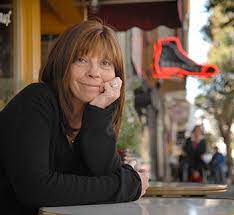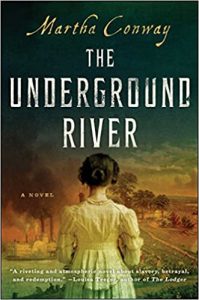Unstuck: Writing the Beginning Over and Over
 This blog series, Unstuck, explores some of the ways fiction writers find themselves stuck and offers tips from successful writers for getting unstuck.
This blog series, Unstuck, explores some of the ways fiction writers find themselves stuck and offers tips from successful writers for getting unstuck.
Unstuck is a six-month series published the first Monday of the month.
Every writer gets stuck at one time or another. Being stuck can trigger feelings of anxiety and self-doubt (to name just a few!) but it doesn’t have to spell the end of your project, or you as a writer. Ray Bradbury famously said: “Writer’s block is just a warning that you’re doing the wrong thing.”
In other words, we can think of being stuck as an alarm rather than a brick wall; something isn’t working but chances are you can fix it.
There are as many ways to become stuck as there are plot twists in a great whodunit. Last month we explored being stuck as you try to find your way into your story. This month let’s examine another common trap:
Stuck Writing the Beginning Over and Over
Sometimes we must scrap everything and start over. But way more often we only want to scrap everything and start over.
Maybe we’ve gotten feedback that makes us re-consider our original story idea. Maybe we have a different idea of a character’s motivation. All of these thoughts and concerns are good! Keep a notebook and write them down.
But it’s also important to keep moving forward.
You could spend six weeks revising chapter one only to decide a month later that the story really begins at chapter three.
I’ve done that.
The Great is the Enemy of the Good (sometimes)
 When I asked author and creative writing instructor Sarah Stone about this thorny issue, she reminded me that:
When I asked author and creative writing instructor Sarah Stone about this thorny issue, she reminded me that:
Early drafts are a place for play and discovery, so rather than going back to tidy it up when we get a new idea, it’s great to write a lumpy, mixed-up version that switches modes and voices and jumps from place to place, one that starts too early in the story or too late.
In other words, keep in mind that your beginning doesn’t have to be—and maybe shouldn’t be—perfect.
As writers, we’re learning useful things (details, character traits, overall themes) as we write our first chapters; for some of us, writing is the only way we can learn them. Others may have traits and themes, etc., plotted out beforehand, but the actual writing always brings some surprises. Characters come across differently on the page than they do in our heads.
So go ahead, be messy.
If you find yourself going back again and again to the beginning without moving on, take a moment to reflect on why you’re returning. It may be that the voice or the story direction isn’t quite right; that is, it isn’t helping you move the story forward.
Sarah Stone advises us to pay attention to those warning signals: “If our internal mechanism absolutely requires of us that we get the voice right before we go on, then we should let ourselves follow our instincts and be kind to ourselves.”
But if you keep going back to the beginning because you are worried/scared/uncertain about what comes next, you may be returning for comfort or avoidance, not guidance.
Here are some tips to help you move forward despite that discomfort.
Tricks for Moving Forward
 Best-selling author Cara Black admits “struggling my way into a story is the beginning of my writing process. All I start with is the place and time, how it feels; whether it’s warm or snowing, the shadows and play of light or whether it’s twilight or dawn. Once I figure that out I can put my character there.”
Best-selling author Cara Black admits “struggling my way into a story is the beginning of my writing process. All I start with is the place and time, how it feels; whether it’s warm or snowing, the shadows and play of light or whether it’s twilight or dawn. Once I figure that out I can put my character there.”
And when the first scene isn’t perfect?
Cara reveals her trade secret:
I think of scenes as chapters so when I’ve written the first scene —knowing it will be re-tooled in revision—I write the last two sentences of that scene then take the second one out and use it as the first sentence in the next scene. (I’m trying to fool myself into taking this sentence out so the next page must be turned.)
What if you’re confused about where to go next?
My own trick is to slow down for a moment. I examine the scene or (even better) the paragraph I keep going back to and l Iook for any detail there that I might exploit.
Writing can feel at times like French braiding: you lift one strand and then another, changing what you weave into the story, but using the same elements. Often the clue as to where the story goes next is there on the previous page.
What if you just know the first scene isn’t right?
Much has been said about Anne Lamott’s advice to write a “shitty first draft.” I have taken to thinking of the first draft of my novel as Draft Zero.
I basically use Draft Zero as a series of scenes, notes, and occasionally brilliant sentences (thank you very much) that I can use in the next draft. My reward: in my next draft and subsequent drafts, the plot is a bit more coherent and the characters are richer.
What if you have a second scene in mind, but you don’t quite know its purpose?
Go back to character. Ask yourself what your character wants in that scene. If your character wants nothing, the scene is unnecessary and will most likely block your forward movement.
As Kurt Vonnegut has said, “Every character should want something, even if it is only a glass of water.”
It may be that you just feel like writing a dinner scene. Do it! But find a way to reveal character or advance the action in that scene. Sometimes writing the scene is the only way to figure that out.
What if you hate what you’ve written so far?
If you hate what you’ve written you are not going to continue. Full stop. But I suspect that most of us sometimes hate our first chapter. On other days it seems pretty good. Tinkering with it endlessly is not going to change that dynamic.
Your task is to find a spark of brilliance in your opening scene that you can build on.
Then ask yourself: What upcoming scenes are you jonesing to write?
If you need to, jump ahead. Write chapter seven after chapter one. Writing something you’re excited about will likely give you ideas, and those ideas will feel exciting, too.
You’ll want to write about them.
And guess what? You’ve now gotten past the beginning. 🙂
—
Martha Conway is the author of the forthcoming novel The Physician’s Daughter. Her previous novels include The Underground River and Thieving Forest.
follow her on Twitter @marthamconway
Cara Black is the New York Times and USA Today bestselling author of Three Hours in Paris and the Aimée Leduc mystery series, which is set in Paris.
Find out more about Cara on her website http://carablack.com/
Follow her on Twitter @carablack
—
Sarah Stone is the author of the novels The True Sources of the Nile and Hungry Ghost Theater, a finalist for the Northern California Book Awards. She teaches creative writing for Stanford Continuing Studies.
Find out more about Sarah on her website https://www.sarahstoneauthor.com/
THE UNDERGROUND RIVER
 The New York Times Book Review Editors’ Choice
The New York Times Book Review Editors’ Choice
Set aboard a nineteenth century riverboat theater, this is the moving, page-turning story of a charmingly frank and naive seamstress who is blackmailed into saving runaways on the Underground Railroad, jeopardizing her freedom, her livelihood, and a new love.
It’s 1838, and May Bedloe works as a seamstress for her cousin, the famous actress Comfort Vertue—until their steamboat sinks on the Ohio River. Though they both survive, both must find new employment. Comfort is hired to give lectures by noted abolitionist, Flora Howard, and May finds work on a small flatboat, Hugo and Helena’s Floating Theatre, as it cruises the border between the northern states and the southern slave-holding states.
May becomes indispensable to Hugo and his troupe, and all goes well until she sees her cousin again. Comfort and Mrs. Howard are also traveling down the Ohio River, speaking out against slavery at the many riverside towns. May owes Mrs. Howard a debt she cannot repay, and Mrs. Howard uses the opportunity to enlist May in her network of shadowy characters who ferry babies given up by their slave mothers across the river to freedom. Lying has never come easy to May, but now she is compelled to break the law, deceive all her new-found friends, and deflect the rising suspicions of Dr. Early who captures runaways and sells them back to their southern masters.
As May’s secrets become more tangled and harder to keep, the Floating Theatre readies for its biggest performance yet. May’s predicament could mean doom for all her friends on board, including her beloved Hugo, unless she can figure out a way to trap those who know her best.
BUY HERE
Category: How To and Tips, On Writing
























